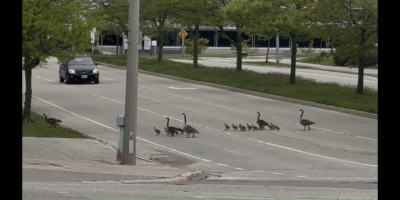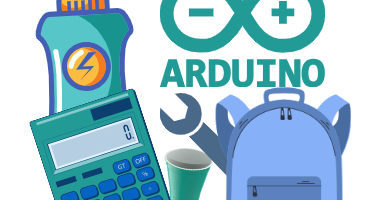Somewhere in an overlooked corner of the engineering buildings, behind an unmapped secret door and up a blind flight of stairs, an “extra floor” that shouldn’t officially exist can be found. On this landing lies the portal to a mysterious club room, left in disuse for over a decade but recently resurrected to open its doors to a new generation. This is no ordinary club room; it is a nexus to the whole world, with arcane devices that provide instant, real-time wireless communication with similar rooms located all across the globe. Serpentine cables are strung across the walls and ceiling, and powerful machines sleep quietly, dreaming of ages past when their might was unleashed on the ether. Most people who find this room mistake it for a warehouse or a museum, but those who have come to understand its capabilities know it as The Shack of the UW Amateur Radio Club.
Founded in 1959, the UW Amateur Radio Club is quite possibly the oldest club on campus, and we would like to state for the record that rumours of our downfall have been somewhat exaggerated. Although a lot of our equipment turned up broken when we excavated the club room last year, operations are still continuing and we have a new complement of hardware to help new “hams” operate with modern radio techniques of the 21st century.
The process of getting started with amateur radio has changed significantly since the “old days”. The availability of radios and accessories from online stores has made it possible for almost anyone to get equipped. For about $100 and a quick visit to a Toronto supplier’s website, it’s possible to get a handheld radio that can operate anywhere on battery power and communicate with other users farther than with any hand-held “walkie-talkie”. It includes features that allow access to local repeaters that will rebroadcast your signals over an even longer range (one local repeater covers all of Kitchener, Waterloo, Cambridge, and Stratford, and most of the surrounding countryside). You don’t have to build everything from scratch (but you can if you want to) and you absolutely don’t have to learn any Morse code to get started!
What’s required to get an amateur radio licence in Canada is a 100-question multiple choice test whose question bank is in the public domain. The questions cover amateur radio regulations, standard operating procedure, basic electronics, antenna construction, and the basics of radio transmitters and receivers. Getting 70% or better on this exam earns you a Basic Qualification, which is enough to start operating on any amateur radio frequency above 30 MHz—this opens up a huge part of the spectrum to whatever experiments or contacts you want to make. These frequencies include the popular “two-metre band”, which can be used for local communication with other amateur stations. (For the best long-distance communications capabilities, you’ll need privileges below 30 MHz. Try for 80% or better to earn a Basic with Honours, and you’ll be able to make contacts all over the world.)
There are many different things to do with a radio licence. If you’re interested in global communications, you can participate in contests and exchange “QSL cards” to provide a record of contacts you’ve made in countries around the world. If you’re into electronics, you can put your skills to work in building receivers, filters, and antennas, or get your Advanced Qualification and get licenced to build transmitters and high-power amplifiers. For those interested in digital signal processing, software-defined radios make it possible to implement radio transceivers entirely in software, and the open source revolution has made programs available for high-speed digital communication using existing radio hardware. Finally, radio amateurs are often called upon to provide emergency communications, especially when traditional channels cannot be used. You could be the operator that gets through to the hospital when no one else can.
Even without an amateur radio licence, there are no laws against receiving most radio signals, so if you’re interested in scanning the airwaves, the “RTL-SDR” family of devices is a quick and inexpensive way to start listening in with just a computer and some free controller software—find them online from a variety of suppliers. But if you’re interested in getting licenced and making transmissions of your own, whether you’re interested in talking “around the block or around the world”, there are a few places to start, and the biggest one on campus is right here with the UW Amateur Radio Club. Visit us online at http://uwarc.uwaterloo.ca/ to take a look at some of our resources and what’s happening with the club. We’re always accepting new members and we’d love to help you get your licence, so come out, talk to us, and get on the air!




Leave a Reply